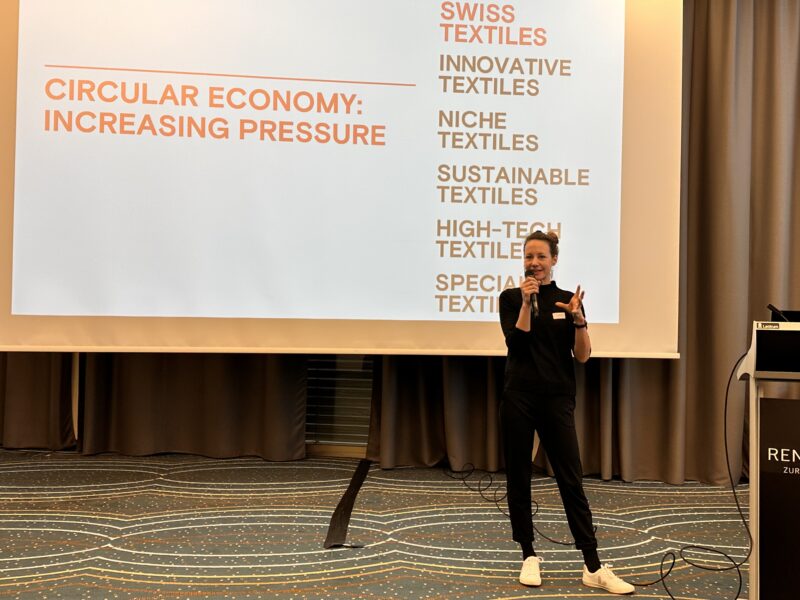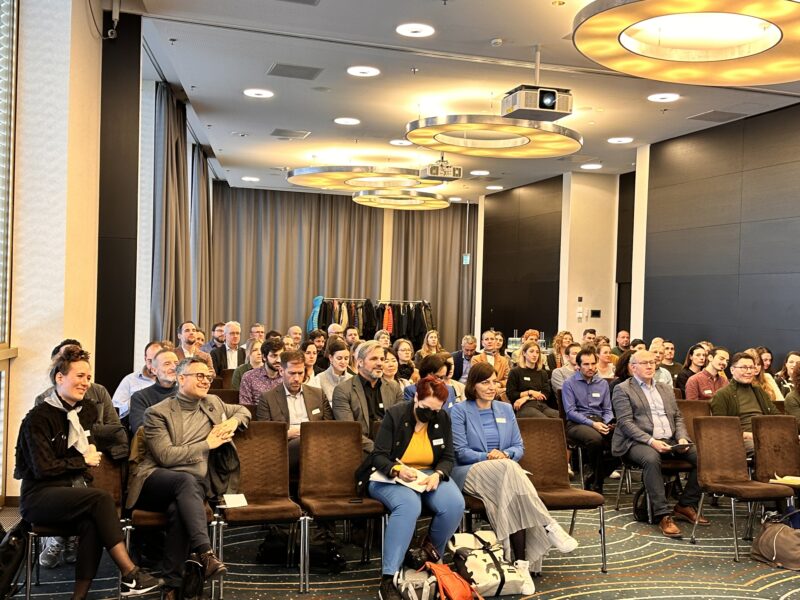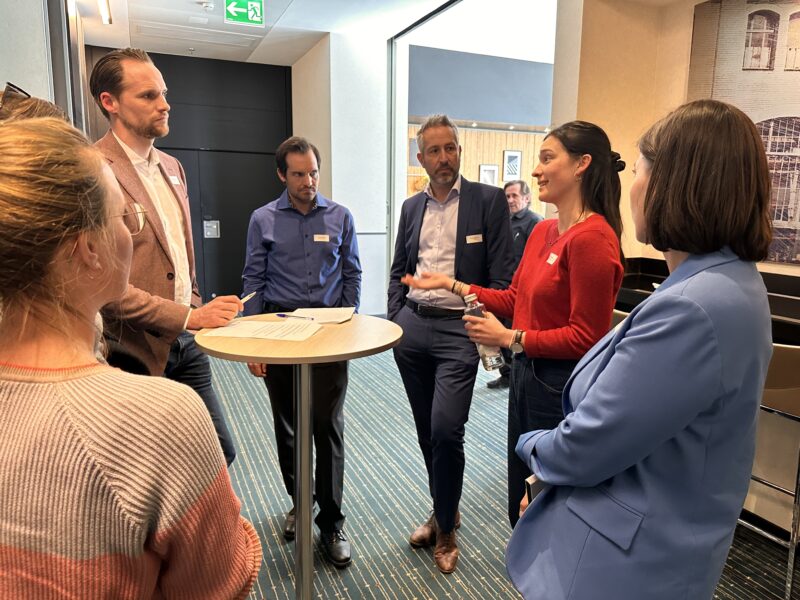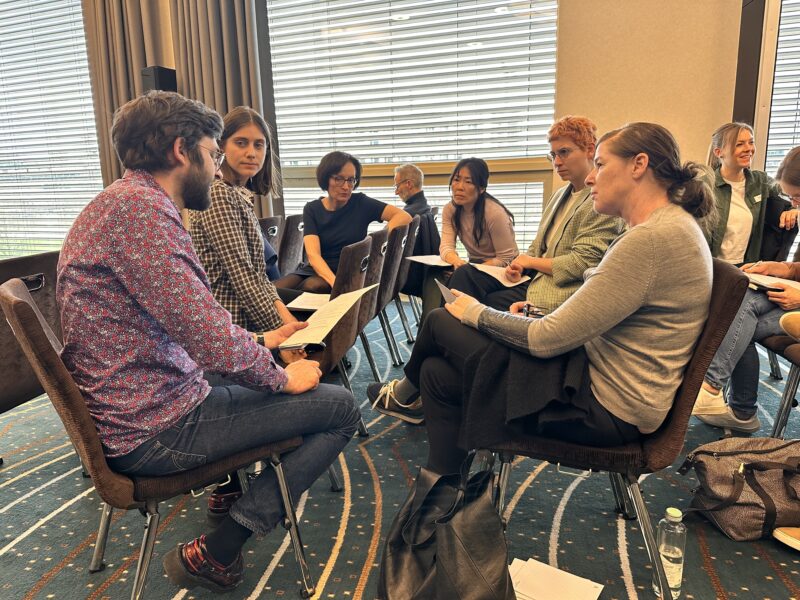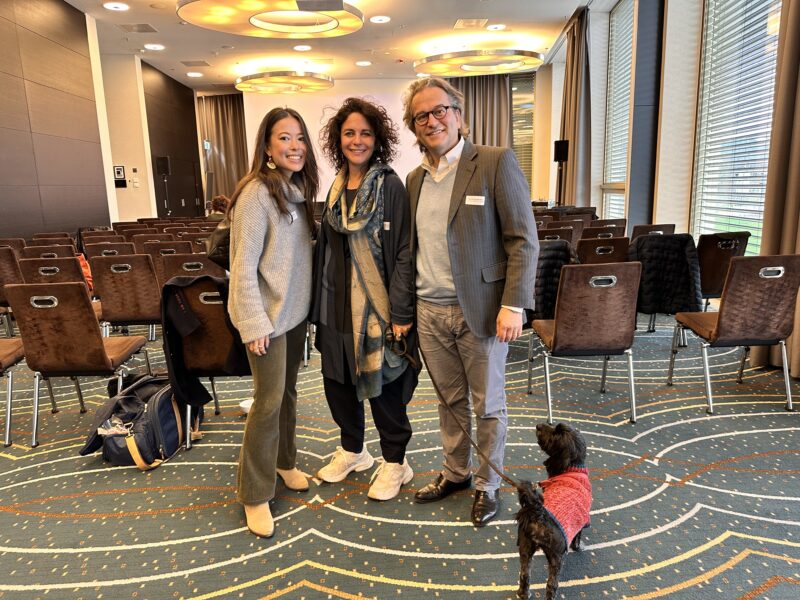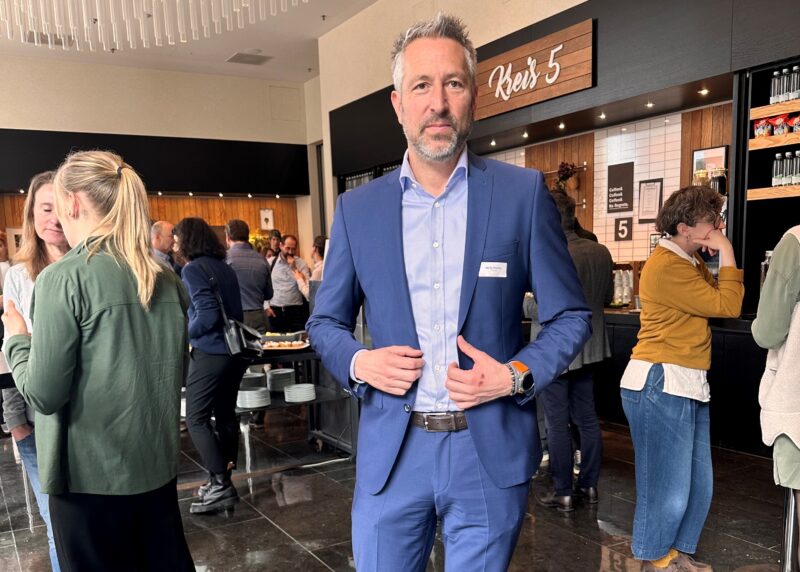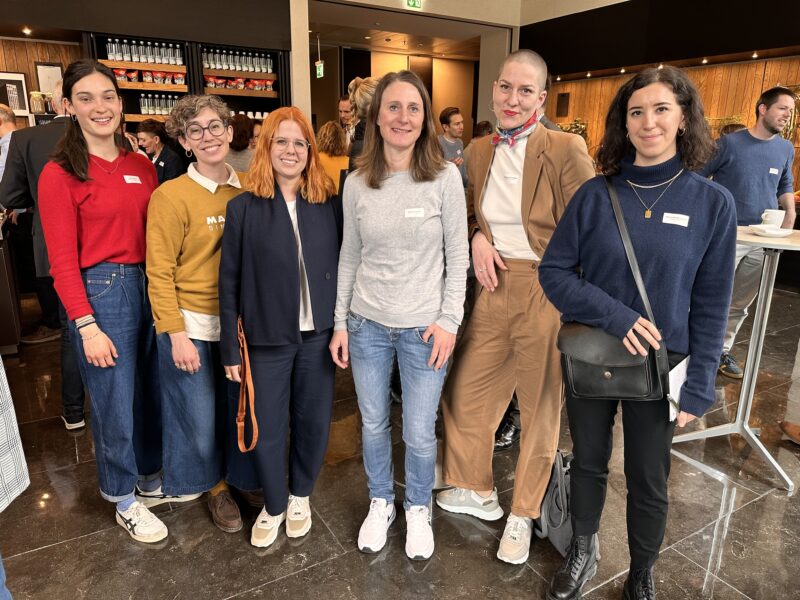Forum Kreislaufwirtschaft
Looking at the future: how the textile industry is to become circular
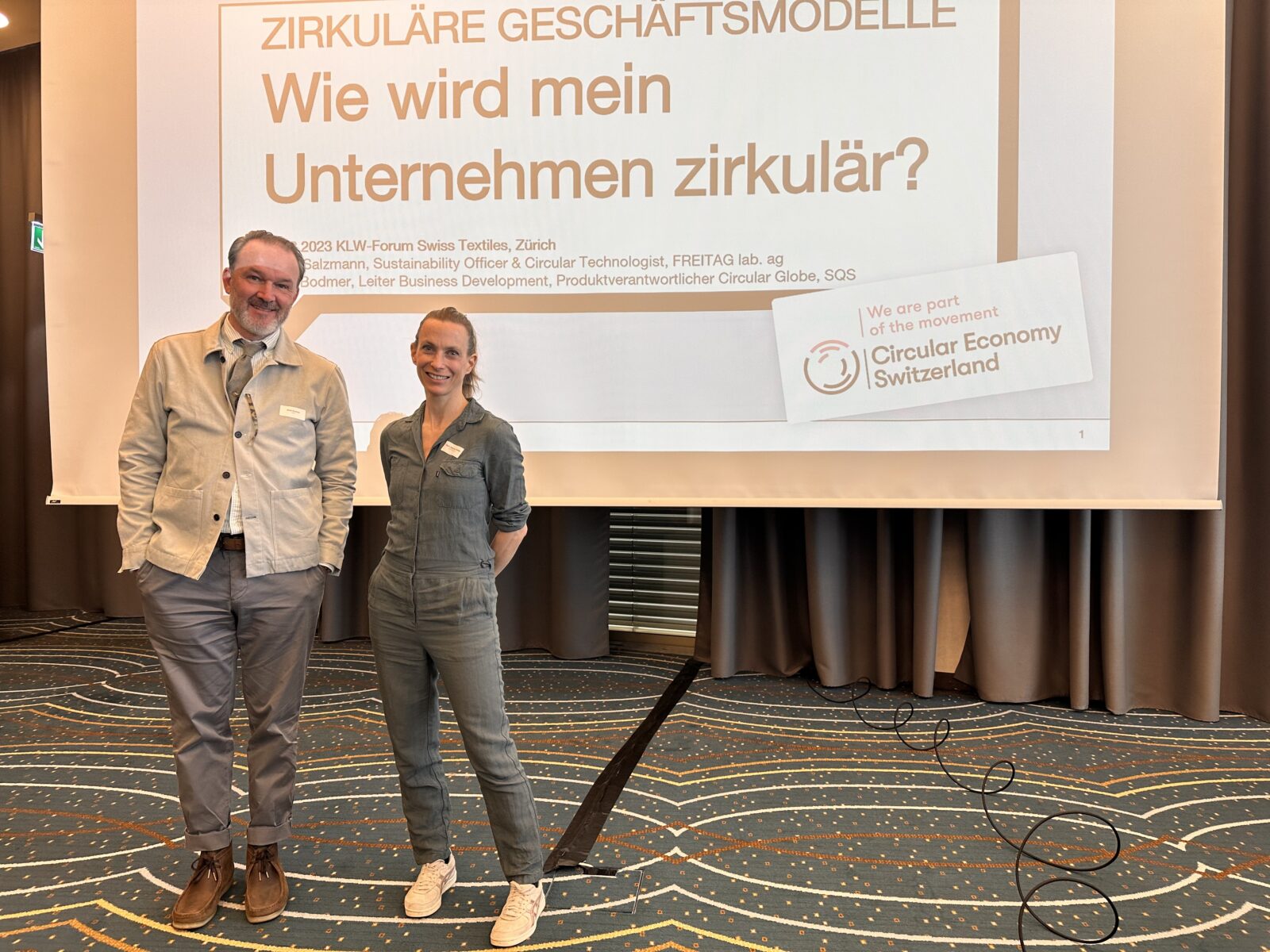
The textile industry had long awaited this event: held in late March, the Swiss Textiles Circular Economy Forum was an opportunity for our domestic industry and research to exchange views on new strategies for the circular economy. They discussed such subjects as environmentally-friendly recycling processes and the future of the circular textile industry.
The textile industry must become circular. Research, manufacturing, development and design have long agreed on that score. At the end of March 2022, the EU adopted its strategy for sustainable and circular textiles. Businesses in the EU and in Switzerland will have to take appropriate measures in coming years. The fact that in Switzerland too the textile industry must develop in an ecological and social direction is illustrated for instance by the Sustainable Textiles Switzerland 2030 programme that was launched and adopted by the Federal authorities in 2020.
Research and industry have admittedly long been working on processes designed to make the branch circular. But the people responsible for this project have had few exchanges up to now. Precious knowhow was not being exchanged effectively.
Research and industry sit down at the same table for the first time
Swiss Textiles brought the stakeholders together at the “Circular Economy Forum” held at the Renaissance Tower Hotel in Zürich. This first meeting of its kind to be held in Switzerland at the end of March was an opportunity for researchers, startup founders, sustainability managers and CEOs to exchange knowledge and experience, initiate joint projects and discuss new strategies with circular potential. One of them examined ways and means of processing biodegradable textiles in our existing composting or biogas facilities.
1. Nina Bachmann of Swiss Textiles opened the event 2. A fascinated audience and a crowded room 3. Participants at the standing round table: discussions focussed on recycling methods fit for the future 4. How are other companies managing? Exchange of views among like-minded participants.
But lets take things in order and start by looking briefly at our national recycling statistics:
The latest numbers published by the Federal Office of the Environment show that each and every one of us sends between six and seven kilos of garments, home textiles and shoes to the collection centre every year. This represents between 50,000 and 65,000 tonnes of discarded textile materials that are gathered up annually. Up to two-thirds of them are in good condition and still fit to be worn. Switzerland sells them on mainly to Eastern Europe, Russia, Africa and the Near East. Just under one-fifth of the total goes for downcycling, in other words is processed to make less valuable products, such as cleaning rags or insulating material. Textile product recycling is practically unknown. It is still in its infancy (see info box).
New pilot plants for environmentally-friendly recycling
That brings us back to the Circular Economy Forum and so to the near future. The first impressions of new methods of chemical, biochemical and mechanical textile recycling showed where and which pilot plants are being built right now.
The biochemical process developed by the Rheiazymesstartup promises to achieve particularly environmentally-friendly recycling by using special enzymes. Then again at DePoly and Worn Again Technologies the focus is placed in turn on recycled PET bottles. Their demonstration plants have specialized in the recycling of polyester or cotton-polyester mixes. And the IT Tool provided by the tech startup iceepwill help textile companies to implement a circular strategy by using a model to take back their consumers’ previously used items. LIST Technologies and Säntis Textil AG hope to massively improve the quality of recycled natural fibres with their textile machines and solvent technology, while OceanSafeis developing new materials with its textile “toolkit” starting from the input stage. Yarn to Yarn, Texaid, Iteratif and HSLUalso presented their own approaches.
1. Annabelle Hutter (Säntis Textiles AG), with Michael and Camilla D. Fischbacher of Christian Fischbacher Co. AG and an animal companion (from left to right) 2. Bigna Salzmann Stoffel (Freitag Lab) and Andri Bodmer (SQS Switzerland) discussed how companies can become circular 3. CEO Martin Böschen represented Texaid and gave an insight into future projects 4. From left to right: Lotta Widmer, Sara Liz Marty, Desirée Gabriel, Daniela Schürmann, Rebekka Sommerhalder and Alessandra Mezzatesta
Where the recycling industry comes under pressure
The ensuing discussion rounds showed where the industry comes under pressure over recycling: as some feedback from the general public shows, the main issues are uncertainties and misunderstood role concepts. The companies want an obligation to be imposed not just on them personally, but also on consumers to see to it that footwear and pullovers do not simply end up in landfill.A recycling charge for the industry?
The question as to responsibility for collecting used textiles also still seems to be open. One participant for instance wanted to know who will collect and separate the textiles – the companies which sold the goods in the first place or the recycling firms through their collection containers? And the basic question: above which quantity will a company find it worthwhile to take back and recycle the goods that it sold?
Financing at least could be secured via a branch solution with recycling contributions: that was suggested by another participant in the discussion round. A project of that kind has apparently already got under way successfully in the packaging sector.
Switzerland is an ideal location to develop the circular textile economy
Two facts in particular emerged from these questions and suggestions. Firstly: there is scarcely any other country in which expertise, research and knowhow in the textile sector are present side by side to the same extent as in Switzerland. The ball is now in the participants’ court. And secondly: the Circular Economy Forum made it perfectly clear why we have regularly been one of the most innovative countries in Europe and the world for a number of years, as the European Patent Office made clear once again only recently. Especially in the matter of textile recycling, we await some exciting developments.
The crux of recycling
Many readers will be mindful of the pictures of metre-high textile mountains in the Atacama Desert in Chile or in Ghana in Africa. The more cheap garments we sell the shorter the time for which we wear them. They end up in collection containers or as household refuse. A study published by the Federal Office of the Environment in 2012 calculated that around 56,000 tonnes of perfectly usable garments are disposed of every year in our rubbish bags.
Traditional reutilization that makes a distinction between chemical and mechanical recycling is currently facing great challenges. There are two reasons for this: firstly, the over-complex material composition of our textiles which has not been calculated in detail. A bra for instance contains up to 50 different materials. Secondly, the synthetic fibres which account for the overwhelming share of our everyday textiles and are made from fossil fuels. Polyester for instance. Synthetic fibres are particularly difficult to recycle and certainly not biodegradable.
There are still no suitable processes to cope with this material mix without at the same time placing a burden on nature and imposing extra costs. That is why the industry is asking manufacturers to limit the materials used to a specified maximum number.
Research and work are already underway to find suitable methods to determine compositions electronically. One approach under consideration is the insertion of a washable RFID chip in each garment. This will identify the material composition and store information that will be available to the recycler even after repeated washing and long wear. Swiss Textiles held a webinar on the subject on 26 April.
